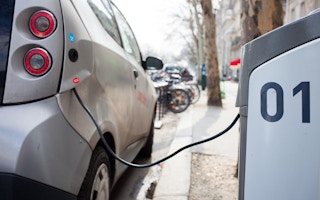A recent article in the Harvard Business Review suggested that if someday millions of people want to buy electric vehicles instead of gas-powered ones, car manufacturers are prepared to adapt their production models to start churning out units immediately.
I wonder – are we at this point already?
Today we have more than a million electric vehicles plying the roads around the world. Nissan-Renault is currently leading global sales of electric vehicles, and other brands like Audi, BMW, General Motors, Ford, Mercedes Benz, and Volvo are also getting ready to enter the market.
Maybe we have reached a point of no return on electric vehicles. As of last week, over 500,000 plug-in vehicles have been sold in the US, according to the US Department of Energy, which is a major milestone. Naysayers have lost the battle, and will soon join the bandwagon and admit that electric vehicles are the only option going forward.
This shift has implications for developing Asia, where there are about over 20 million auto-rickshaws or tricycles, double that number of motorcycles, and even more boats, cars and trucks.
I earlier argued that it was in Asia where we need to start an electric car revolution at the bottom of the pyramid to trigger faster and wider market adoption for affordable electric cars, at the same time that demand grows at the top of the pyramid for the more expensive Chevrolet Bolt or Nissan Leaf in the developed world.
Why wait five to seven years for the technology to trickle down to the bottom of the pyramid from the top, like the first generation of mobile phones? With the right enablers and public sector support, developing countries can move forward even faster from this point of no return if we tap the developing world into the same transformation.
For real transformation though, we will need the inspiration and technology from forward-thinking governments in developing countries to create largely public-funded projects to enable new markets for electric vehicles to grow. It does not only make business sense – poor people in developing countries disproportionately suffer pollution, unreliable power supply, and volatility in oil prices.
“
In Asia…we need to start an electric car revolution at the bottom of the pyramid to trigger faster and wider market adoption for affordable electric cars.
What developing countries need is a basic electric vehicle, not a fast-moving, high-end model. This car is essentially a set of batteries on a drive train without a fuel tank, heavy engine and radiators, and just a few moving parts. Experience shows that establishing a local electric car industry could be done with small investments and basic technology transfer.
I remember checking out the first electric four-wheel vehicle back in 2009, and have seen many three- and two-wheel models since. Once the market of batteries, control systems and quality engines are set, the local industry will be able to develop innovative solutions to convert old gas-fuelled cars and boats to run on electric engines, an idea that is slowly taking shape in the developed world.
Let’s take advantage of this point of no return, and help developing countries achieve energy independence, reduce air pollution, mitigate climate change impact, and meet the climate targets of the Paris Agreement.
We all need this transformation, as the growing market of car ownership will be in Asia. Let’s not forget today, over 20 years after the introduction of mobile phone, it is the developing world that dominates. That’s why we should start early to help the people at the bottom of the pyramid adopt electric cars faster.
Sohail Hasnie is Principal Energy Specialist, Central and West Asia Department at the Asian Development Bank. This post is republished from the ADB blog.









